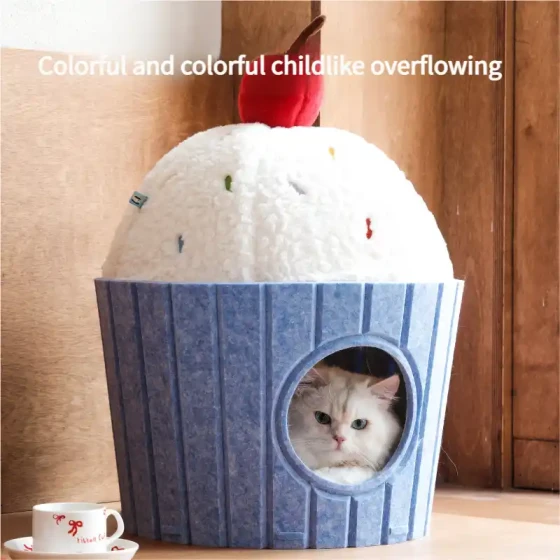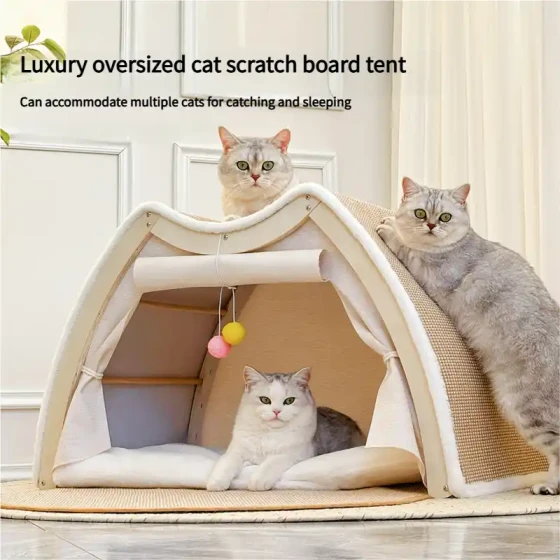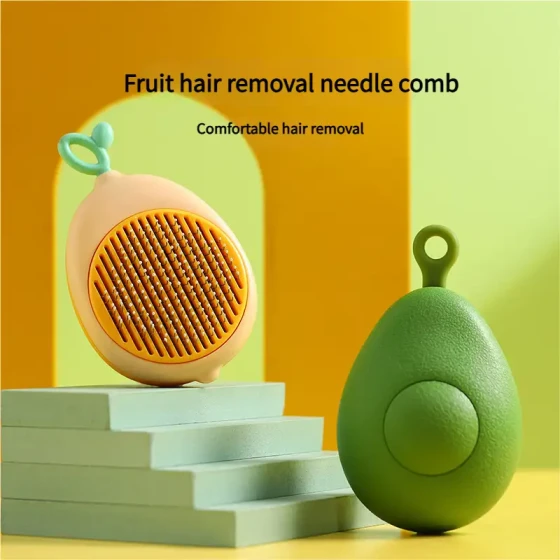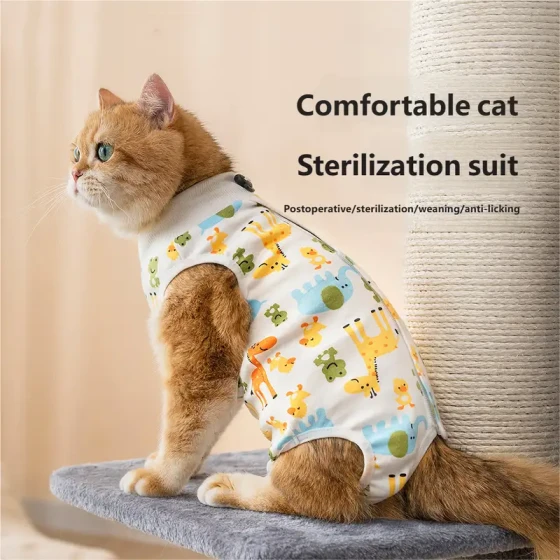What to Feed Stray Cats_5 Recommended Safe Foods Best Suited for Stray Cats
What to feed stray cats is a question many people care about since these homeless little fellows have a hard time surviving. Although many people kindly offer food, improper methods or food choices may do more harm than good. Providing stray cats with safe and suitable food not only helps relieve their hunger but is also a responsible act of kindness.

Recommended Safe Foods Best Suited for Stray Cats
When providing food for stray cats, choosing specially designed cat food is the safest and most nutritious option. Such food usually contains the proteins, fats, vitamins, and minerals cats need, meeting their basic physiological requirements.
-
Dry Cat Food: Economical and Easy to Store
Dry cat food is the most common and convenient option for feeding stray cats. Its advantages are obvious: easy to store, not prone to spoilage, and relatively affordable, so even budget-conscious animal lovers can afford it. Many brands offer cost-effective dry cat food for strays, such as Miaofansi, Dingzhi, Mafu Di, and NetEase Yanxuan, all providing reasonably priced options. These cat foods typically have acceptable protein content to satisfy stray cats’ essential nutritional needs. Some brands even produce formulas specifically for stray cats.
When feeding dry cat food, it’s best to place it in a sheltered area to avoid rain damage and spoilage. Also, promptly clean leftover food to prevent bacterial growth or attracting insects and flies.
-
Wet Cat Food (Canned Cat Food): Palatable and Hydrating
Wet cat food, commonly known as canned cat food, is irresistible to cats. Its palatability attracts stray cats to eat. Additionally, wet food contains higher moisture, which helps cats that dislike drinking water to stay hydrated.
However, once opened, canned cat food is hard to store and can spoil quickly, especially in hot weather. Therefore, when feeding wet food, control portions so cats can finish it quickly, and clean up any leftovers promptly. If available at convenience stores, canned cat food is also a good choice for stray cats.
-
Homemade Cat Meals (Use Caution): Nutritionally Controllable but Perishable
Some caregivers choose to prepare homemade cat meals, such as boiled chicken breast or fish. The advantage is controlling ingredients and flavors, and cooked meats provide rich protein beneficial to cats. In cold winters, warm homemade food can provide extra calories for strays.
However, the downside is obvious: homemade food is hard to store and spoils easily, especially outdoors. Also, homemade meals must ensure nutritional balance; feeding only boiled meat long-term can cause malnutrition in cats. Therefore, if choosing homemade cat food, carefully study cats’ nutritional needs or consult a veterinarian to ensure a complete diet.
-
Cat Treats (In Moderation): Attract Cats and Build Affection
Cat snacks like cat sticks or dried fish are attractive to stray cats. These treats usually have good palatability and can be a good way to attract cats and build trust.
However, treats cannot replace main meals as their nutrition is insufficient. Overfeeding treats may lead cats to become picky and impact their health. Therefore, treats should only be given occasionally as supplements.
Foods to Avoid Feeding Because They Are Dangerous
Although stray cats are not picky when hungry, some foods are "poison" to them and can harm them if fed.
- Milk: Most cats are lactose intolerant, and drinking milk can cause diarrhea and dehydration in severe cases. Although some cats with special constitutions may tolerate milk, it’s safer to avoid feeding it.
- Human Food: Our daily foods, especially cooked meals, often contain high salt, oil, and seasonings that burden cats’ kidneys and digestive systems. Foods containing onions, garlic, leeks, etc., are highly toxic to cats and may cause hemolytic anemia. Chocolate, caffeine, and alcohol are also toxic and can be life-threatening. Fatty meat can cause gastrointestinal discomfort.
- Dog Food: Cats and dogs require different nutrients; dog food’s nutrient profile is unsuitable for cats long-term. Occasional consumption is not a big problem, but long-term feeding can cause malnutrition in cats.
- Spoiled Food: Foods left outdoors, especially wet or homemade food, spoil easily. Eating spoiled food may cause gastrointestinal illness or food poisoning.
Scientific Feeding Tips for Stray Cats
Feeding stray cats is more than just giving food; attention to details can truly help them and avoid affecting the community and residents.
- Choose Appropriate Feeding Location and Time: Prefer quiet, low-traffic, sheltered places. Avoid busy areas or garages to prevent disturbing others or risking accidents. Avoid feeding during rush hours.
- Maintain Safe Distance: Stray cats may be wary of humans. Do not forcibly approach or touch them to avoid scratches or bites. If handling is necessary (e.g., rescuing injured cats), use protective measures like gloves.
- Clean Up Promptly: Always clean leftover food and utensils after feeding to maintain hygiene and prevent attracting mosquitoes, insects, or rodents, reducing disease risks.
- Provide Clean Water: Besides food, clean drinking water is equally important. Place a clean water bowl near the feeding area and refresh it regularly.
- Support TNR Programs: Feeding alleviates hunger but does not solve overpopulation. The internationally recognized humane method is TNR (Trap-Neuter-Return), which controls reproduction by neutering strays, thereby reducing their numbers and improving survival conditions long-term, lessening community issues such as noise, fights, and disease spread. Some regions have started TNR projects with positive results.
- Do Not Adopt Lightly: Adopting strays requires careful consideration, as they may carry parasites or diseases needing veterinary exams, deworming, and vaccination. Strays need time to adapt to new environments and family life. Without proper preparation and responsibility, impulsive adoption followed by abandonment only worsens their plight.
Frequently Asked Questions
- Q: Can I feed stray cats leftover human food?
A: Not recommended. Human food usually has high salt and oil and contains substances cats cannot metabolize (like onions and garlic), which can cause illness or poisoning. It’s best to feed specialized cat food or canned food. - Q: Will feeding stray cats make them lose their hunting ability?
A: Long-term fixed feeding may reduce their hunting needs, but they retain hunting instincts. However, overdependence may make survival hard if food is unavailable. - Q: Can I feed stray cats milk?
A: Most cats are lactose intolerant; milk can cause diarrhea and dehydration. It’s better not to feed milk but provide clean water instead. - Q: Will feeding stray cats attract more cats?
A: Large quantities of food at one location may attract more strays. Fixed, moderate feeding combined with TNR is a better approach. - Q: What should I do if I find a stray cat?
A: If able to adopt, first take it to a vet for exams, deworming, and vaccination. If not, contact local animal rescue or support TNR projects.
Summary
Feeding stray cats is an act full of love, but we need to learn scientific methods to avoid causing harm. Choose specialized dry or canned cat food, avoid human food and harmful ingredients, respect feeding etiquette regarding location and timing, clean up promptly, and support stray cat TNR neutering plans to truly help these little urban lives live healthier and safer.



